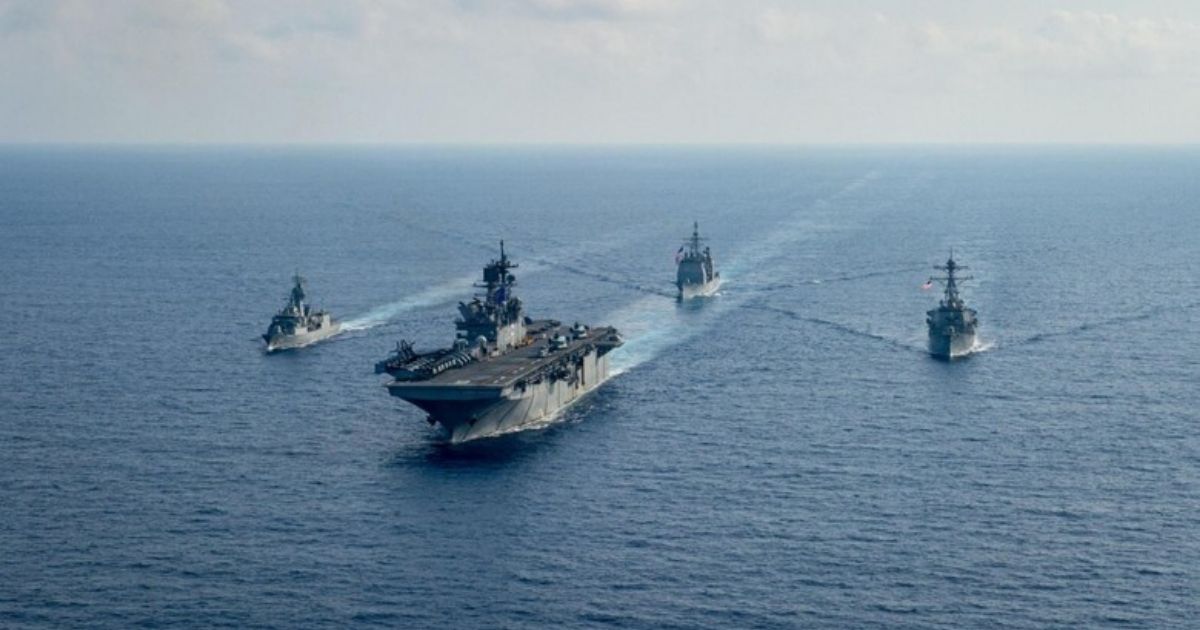U.S. Navy and Royal Australian Navy Team Up in South China Sea

The U.S. Navy and Royal Australian Navy came together for operations in the South China Sea starting April 13.
HMAS Parramatta (FFG 154) began sailing with Ticonderoga-class guided missile-cruiser USS Bunker Hill (CG 52) then rendezvoused with amphibious assault ship USS America (LHA 6) and Arleigh-Burke class guided missile destroyer USS Barry (DDG 52) April 18. Their combined operations started with force integration training and maneuvering exercises between Parramatta and Bunker Hill.
“It is great to be operating with the Australians again,” said Capt. Kurt Sellerberg, commanding officer of the USS Bunker Hill. “Every time I have deployed to this region, and to the Middle East, I have had the good fortune to operate with the Royal Australian Navy.” Operations with USS America started with a precision maneuvers that included Barry in the South China Sea.
“We look forward to every opportunity we get to work with our stalwart Australian allies at sea,” said Rear Adm. Fred Kacher, commander of the America Expeditionary Strike Group. “To bring this much combat capability together here in the South China Sea truly signals to our allies and partners in the region that we are deeply committed to a free and open Indo-Pacific.”
Operations with Parramatta have included integrated live fire exercises, coordinated helicopter operations, small boat force protection drills, command and control integration, and maneuvering interoperability.
“San Diego [HM-60] ‘Romeo’ pilots have a long flying history with Australian pilots,” said Lt. Cmdr. Jacob “Shaky” Norgaard, “it’s a great opportunity to strengthen our relationship and practice joint tactics, techniques and procedures.”
The events gave both navies the opportunity to integrate all warfare areas, and further strengthen the bond between both countries.
"I was super pumped to participate in cross-deck operations with the Royal Australian Navy,” said Lt. Rachael “Janet” Davis. “We are stronger together, and this type of integration promotes our commitment to maritime security as well as increases our presence here.”
The U.S. and Australia share a long history of integrated military exercises. Over 3,000 U.S. Sailors and Marines had the opportunity to observe or participate in the combined exercise.
“They have the same interest in ensuring freedom of navigation and observance of internationally accepted norms and customs pertaining to the law of the sea,” Sellerberg said. “The Aussies are true professionals in every sense of the word, and our current combined deployment exemplifies a shared commitment to our historically strong and enduring relationship.”
U.S. 7th Fleet conducts forward-deployed naval operations in support of U.S. national interests in the Indo-Pacific area of operations. As the U.S. Navy’s largest numbered fleet, 7th Fleet interacts with 35 other maritime nations to build partnerships that foster maritime security, promote stability, and prevent conflict.

